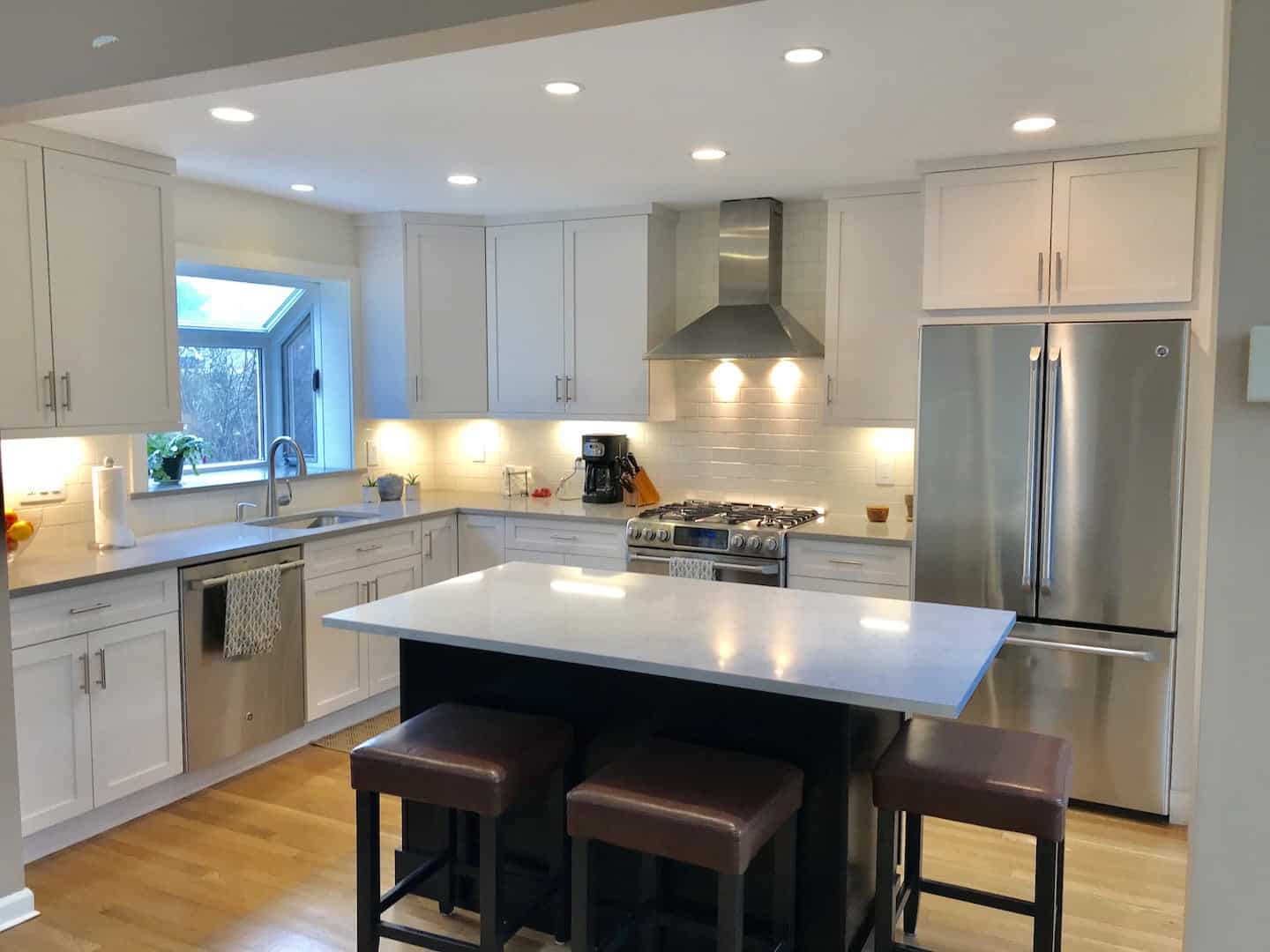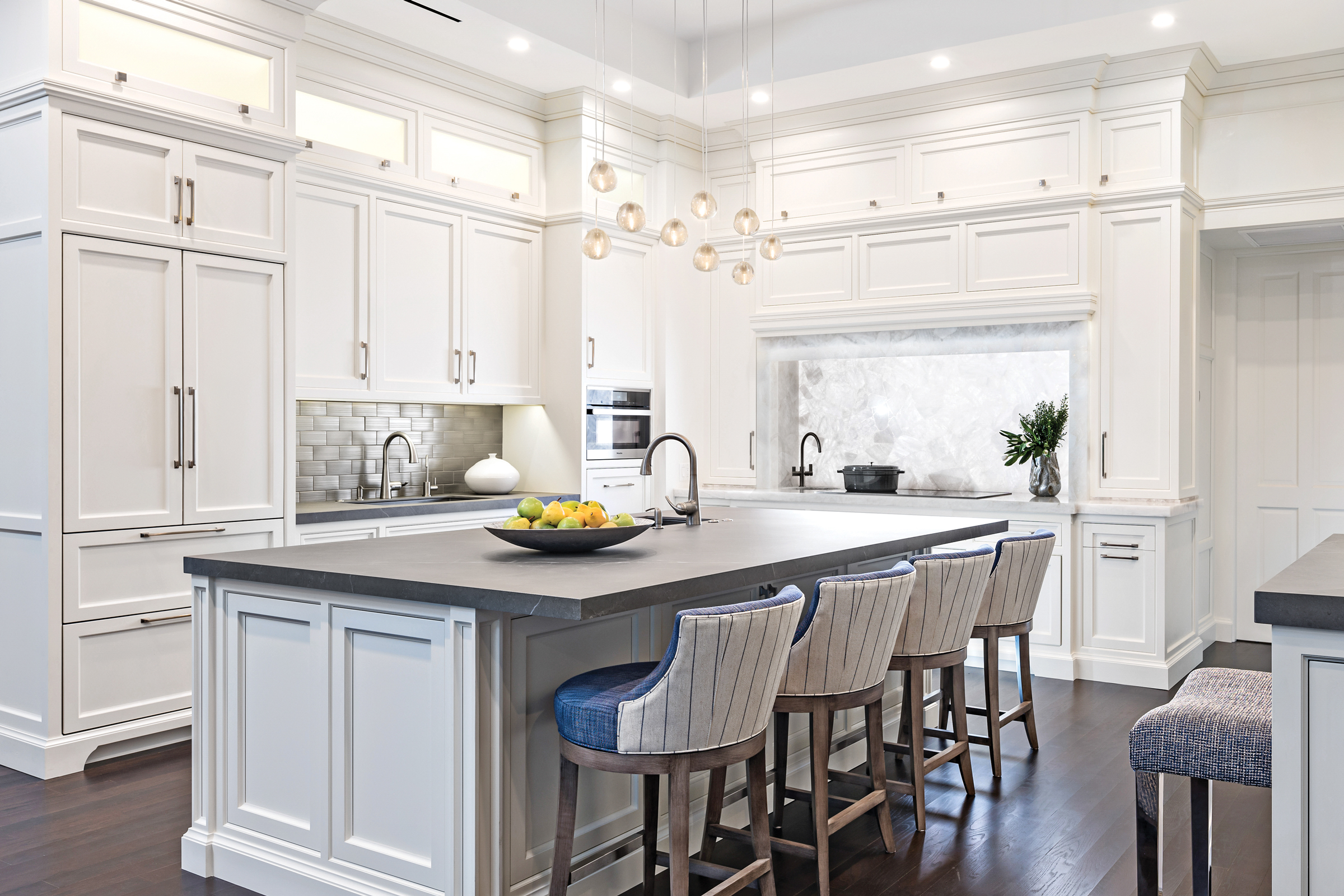Types of Water-Based Finishes for Kitchen Cabinets: Best Water Based Finish For Kitchen Cabinets

Choosing the right water-based finish for your kitchen cabinets is crucial for both aesthetics and longevity. Water-based finishes offer a low-VOC (volatile organic compound) alternative to traditional oil-based paints, making them a healthier and more environmentally friendly option. However, understanding the nuances of different types is key to achieving a durable and beautiful result. This section will explore the key characteristics of several popular water-based finishes, comparing their durability, application, and overall suitability for kitchen cabinets.
Acrylic Finishes for Kitchen Cabinets
Acrylic finishes are a popular choice for kitchen cabinets due to their ease of application and relatively quick drying time. They offer good durability and are resistant to moderate wear and tear. However, they may not be as resistant to scratches and water damage as some other options. The relatively low cost makes them an attractive option for budget-conscious homeowners. Maintenance is straightforward; regular cleaning with mild soap and water is usually sufficient. The finish tends to have a slightly softer sheen compared to polyurethane.
Polyurethane Finishes for Kitchen Cabinets
Polyurethane water-based finishes offer superior durability compared to acrylics. They are known for their excellent resistance to scratches, water damage, and abrasion. This makes them ideal for high-traffic areas like kitchens. Application can be slightly more challenging than acrylics, requiring a smoother technique to avoid brush strokes. Drying time is also generally longer. The higher durability comes at a slightly higher cost than acrylics, but the increased longevity can offset this over time. The finish offers a wide range of sheens, from matte to high-gloss.
Lacquer Finishes for Kitchen Cabinets
Water-based lacquers offer a very hard, durable finish with excellent gloss and clarity. They dry exceptionally fast, often allowing for multiple coats in a single day. This speed can be advantageous for large projects. However, lacquers are generally more challenging to apply and require a high level of skill to avoid imperfections. They are also more sensitive to humidity and temperature fluctuations during application. The cost is typically higher than acrylics or polyurethanes. Maintenance is similar to other water-based finishes, requiring regular cleaning with mild soap and water.
Comparison of Water-Based Finishes for Kitchen Cabinets
The following table summarizes the key characteristics of each finish type:
| Finish Type | Ease of Application | Drying Time | Scratch & Water Resistance |
|---|---|---|---|
| Acrylic | Easy | Fast | Moderate |
| Polyurethane | Moderate | Moderate | High |
| Lacquer | Difficult | Very Fast | High |
Visual Guide to Applying Water-Based Finishes
Applying any finish requires careful preparation. Regardless of the chosen finish (acrylic, polyurethane, or lacquer), the process generally involves these steps:
1. Surface Preparation: Thoroughly clean the cabinets to remove grease, dirt, and any previous finish. Sanding may be necessary to create a smooth surface for optimal adhesion. This step is crucial for a professional-looking finish and is the same for all three finish types.
2. Priming (Optional but Recommended): Applying a water-based primer enhances adhesion and provides a uniform base for the topcoat. This step applies equally to all three finish types.
3. Application: Apply thin, even coats of the chosen finish using a brush, roller, or spray gun. Allow sufficient drying time between coats, as specified by the manufacturer’s instructions. The application technique may vary slightly depending on the chosen finish and the applicator used. For example, spraying lacquer requires a specialized setup and more expertise than brushing on acrylic.
4. Sanding (Between Coats): Lightly sand between coats to smooth out any imperfections before applying the next coat. This is usually done with fine-grit sandpaper and is a step common to all three finish types.
5. Final Inspection and Cleaning: Once the final coat is dry, inspect the cabinets for any imperfections and clean up any spills or drips.
Application Techniques and Preparation

Choosing the right water-based finish is only half the battle. Proper preparation and application techniques are crucial for achieving a durable and beautiful finish on your kitchen cabinets. Overlooking these steps can lead to an uneven, unattractive, and ultimately short-lived result. Let’s dive into the details.
Best water based finish for kitchen cabinets – Before you even think about grabbing your brush, thorough preparation is key. This involves a multi-step process ensuring a smooth, clean surface ready to accept the finish. Failing to properly prep your cabinets will almost certainly lead to a less-than-perfect outcome.
Cabinet Preparation, Best water based finish for kitchen cabinets
Preparing your kitchen cabinets involves several crucial steps. Each step plays a vital role in ensuring the final finish adheres properly and looks its best. Skipping even one step can compromise the overall quality of the project.
- Cleaning: Begin by thoroughly cleaning the cabinets to remove grease, grime, and any existing finish. Use a degreaser and a soft cloth or sponge, paying close attention to hard-to-reach areas. Rinse thoroughly with clean water and allow to dry completely.
- Sanding: After cleaning, lightly sand the cabinet surfaces with fine-grit sandpaper (180-220 grit). This step helps to create a smooth surface and improves adhesion. Focus on removing any imperfections or raised areas. Always sand in the direction of the wood grain to avoid scratches.
- Priming: Applying a primer is highly recommended, especially on bare wood or if you’re changing the cabinet color significantly. A good quality water-based primer will ensure better adhesion of the topcoat and create a uniform surface for a smoother finish. Allow the primer to dry completely according to the manufacturer’s instructions.
Applying the Water-Based Finish
Applying the finish requires a steady hand and careful technique. The goal is to achieve even coverage without drips or runs. Multiple thin coats are always better than one thick coat, allowing for proper drying and preventing imperfections.
- Stir the Finish: Gently stir the water-based finish thoroughly before each application to ensure even consistency.
- Apply Thin Coats: Use a high-quality brush, roller, or sprayer to apply thin, even coats. Work in the direction of the wood grain for a smoother finish. Avoid overloading the brush or roller.
- Allow Drying Time: Allow each coat to dry completely before applying the next. Drying time will vary depending on the finish and environmental conditions. Refer to the manufacturer’s instructions for specific drying times.
- Light Sanding (Optional): Between coats, you may lightly sand with very fine-grit sandpaper (320 grit or higher) to smooth out any imperfections before applying the next coat. Wipe away dust before applying subsequent coats.
- Multiple Coats: Apply multiple thin coats for optimal durability and depth of color. Two to three coats are typically sufficient.
Common Mistakes and Solutions
Even experienced DIYers can make mistakes when applying water-based finishes. Understanding common errors and their solutions can save you time, effort, and frustration.
| Mistake | Cause | Solution | Preventative Measures |
|---|---|---|---|
| Uneven Finish | Uneven application, insufficient stirring, or dust on the surface | Lightly sand and reapply a thin coat. Ensure the surface is clean and dust-free before each coat. | Thoroughly stir the finish, apply thin even coats, and work in a clean, dust-free environment. |
| Brush Strokes | Using too much finish, applying thick coats, or improper brushing technique | Lightly sand with fine-grit sandpaper after the finish dries to minimize the appearance of brush strokes. | Apply thin, even coats and use smooth, even strokes with the brush or roller. |
| Drips and Runs | Applying too much finish at once, or working too slowly | Allow the drips to dry and lightly sand them smooth. | Apply thin coats and work quickly and efficiently. |
| Poor Adhesion | Insufficient cleaning or sanding, or applying finish to a damp surface | Remove the poorly adhered finish and start again, ensuring the surface is properly cleaned, sanded, and dry before applying the finish. | Thoroughly clean and sand the surface, and ensure it’s completely dry before applying the finish. |
Maintenance and Longevity

Water-based finishes, while offering numerous advantages, require specific care to ensure their longevity and maintain the beautiful look of your kitchen cabinets. Understanding the potential challenges and implementing proper maintenance practices will significantly extend the lifespan of your finish and keep your cabinets looking their best for years to come. Neglecting proper care can lead to premature wear and tear, necessitating costly repairs or refinishing.
Proper maintenance is key to preserving the integrity of a water-based finish on kitchen cabinets. Regular cleaning and mindful use will prevent many common problems. Understanding the characteristics of the finish, such as its susceptibility to certain chemicals and abrasives, is crucial for effective and safe cleaning.
Potential Problems and Solutions
Water-based finishes, while durable, are not impervious to damage. Chipping, peeling, and discoloration are potential issues, but often preventable with careful attention. Chipping can result from impacts, while peeling may be caused by inadequate surface preparation before application or exposure to excessive moisture. Discoloration might stem from exposure to sunlight or harsh chemicals. Addressing these issues requires a proactive approach. Minor chips can often be repaired with touch-up paint, carefully matching the existing finish. More extensive damage may require professional intervention. Preventing peeling requires careful surface preparation and the application of multiple thin coats, ensuring proper drying time between coats. Discoloration can sometimes be mitigated with careful cleaning and polishing, but severe cases may require refinishing.
Cleaning and Care Guide
Regular cleaning is essential for maintaining the appearance and longevity of your water-based cabinet finish. The following steps provide a comprehensive guide to keeping your cabinets looking their best:
- Daily Cleaning: Wipe down spills and splatters immediately with a soft, damp cloth. Avoid letting liquids sit on the surface.
- Weekly Cleaning: Use a mild dish soap solution and a soft sponge or cloth to gently clean the cabinet surfaces. Rinse thoroughly with clean water and dry immediately with a soft cloth to prevent water spots.
- Monthly Cleaning: Apply a high-quality wood cleaner specifically designed for water-based finishes, following the manufacturer’s instructions. This will help remove ingrained dirt and grime and maintain the finish’s luster.
- Avoid Abrasive Cleaners: Never use abrasive cleaners, scouring pads, or harsh chemicals, as these can scratch or damage the finish.
- Protect from Moisture: Prevent excessive moisture buildup by ensuring adequate ventilation in your kitchen. Address any leaks promptly to prevent water damage.
- Prevent Scratches: Use protective pads or felt liners under heavy items placed on the cabinets. Be mindful of sharp objects that could scratch the surface.
- Regular Inspection: Periodically inspect your cabinets for any signs of damage, such as chips, scratches, or discoloration. Address minor issues promptly to prevent them from becoming more significant problems.
